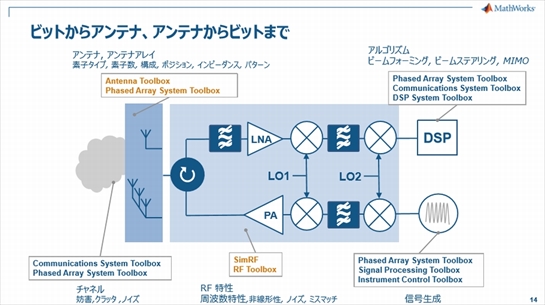

- #Matlab simulink rf toolbox how to#
- #Matlab simulink rf toolbox install#
- #Matlab simulink rf toolbox verification#
- #Matlab simulink rf toolbox code#
- #Matlab simulink rf toolbox download#
rfckt Objectsĭetermine when to use RF circuit, rfbudget, and
#Matlab simulink rf toolbox how to#
This example shows how to read, analyze, and de-embed RF data from a Touchstone data file. This example shows how to build a superheterodyne receiver and analyze the receiver's RF budget for gain, noise figure, and IP3 using the RF Budget Analyzer app.ĭescribes how to build, simulate, and visualize the frequency-domain behavior of an RFĭescribes how to compute and evaluate the transfer function of a transmission line and Superheterodyne Receiver Using RF Budget Analyzer App.
#Matlab simulink rf toolbox code#
The following code checks for licenses for the entire list above: index cellfun ( (f) license test, f), featureStr) availableFeatures featureStr (logical (index)) However, the above just confirms that the license.

#Matlab simulink rf toolbox install#
Opening the file will automatically install the Toolbox, adding the necessary components to your MATLAB path.
#Matlab simulink rf toolbox download#
Simulink ® blocks, SPICE netlists, or Verilog ®-A modules for time-domain simulation. Using the above list of feature strings and the function license, you can check which toolboxes you have a license to use. Download the latest mltbx file then open that file within MATLAB. Release 2021b (R2021b) offers hundreds of new and updated features and functions in MATLAB and Simulink, along with two new products and five major updates. Method, you can model backplanes, interconnects, and linear components, and export them as MathWorks introduced Release 2021b of the MATLAB and Simulink product families. The RF Budget Analyzer app lets you analyze transceiver chains in terms of noise, power,Īnd nonlinearity and generate RF Blockset™ models for circuit envelope simulation. You can also de-embed, check, and enforce passivity, and compute group and Using rectangular and polar plots and Smith ® Charts. S-parameters convert among S, Y, Z, T, and other network parameters and visualize RF data The toolbox providesįunctions for analyzing, manipulating, and visualizing RF data. Components can be specified using measurementĭata such as Touchstone files, network parameters, or physical properties. Matching networks, amplifiers, and mixers. RF Toolbox lets you build networks of RF components such as filters, transmission lines, The toolbox supports wirelessĬommunications, radar, and signal integrity projects. Visualizing networks of radio frequency (RF) components. RF Toolbox™ provides functions, objects, and apps for designing, modeling, analyzing, and Her thesis dealt with modeling high-frequency RF devices.Design, model, and analyze networks of RF components Giorgia has a master’s degree in electronic engineering and a doctorate in electronic engineering for telecommunications from the University of Bologna. Before then, she worked for Philips Research, where she contributed to the development of system-level models for innovative telecommunication systems.
#Matlab simulink rf toolbox verification#
Before joining MathWorks in 2009 as an application engineer focusing on signal processing and communications systems with specialization in analog simulation, Giorgia worked for two years at NXP Semiconductors on mixed-signal verification methodologies.

Giorgia Zucchelli is the product marketing manager for RF and mixed-signal at MathWorks. Using multi-carrier simulation for coexistence and interferer analysisĭr.Integrating RF system simulation in your MATLAB code.Using S-parameter, noise, and non-linearity data for RF budget analysis.Designing RF transceivers at the system-level.Finally, you will learn how to use multi-carrier Circuit Envelope simulation for coexistence and interferer analysis. With this new methodology, you can simulate the entire system in MATLAB together with digital signal processing algorithms. You can add analog / digital data converters and control logic to the RF transceiver and develop innovative architectures. Listed below is the complete set of Toolboxes on the TACC resources. You will see how to customize your RF model to include effects such as impedance mismatches, saturation, and finite isolation. MATLAB, Simulink, and a lot of MATLAB toolboxes are available on the TACC resources. Practical examples will demonstrate how to perform RF budget analysis and estimate the impact of S-parameters, non-linearity, and noise. With this new approach you can directly integrate RF models in MATLAB for the simulation of digital communication (5G, WLAN, etc.) or radar systems. Learn three simple steps to design RF transceivers, integrate them in your existing MATLAB code, and perform system-level simulation.


 0 kommentar(er)
0 kommentar(er)
